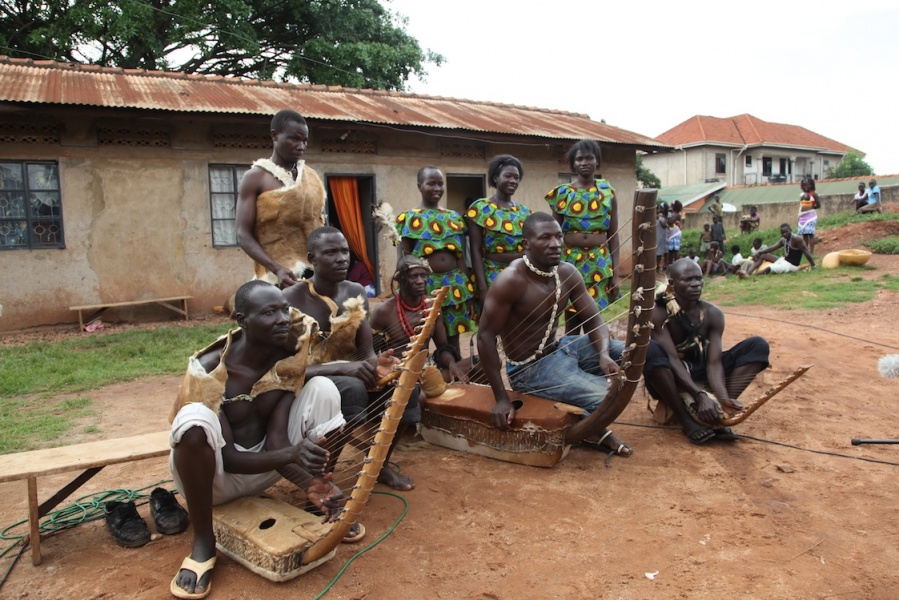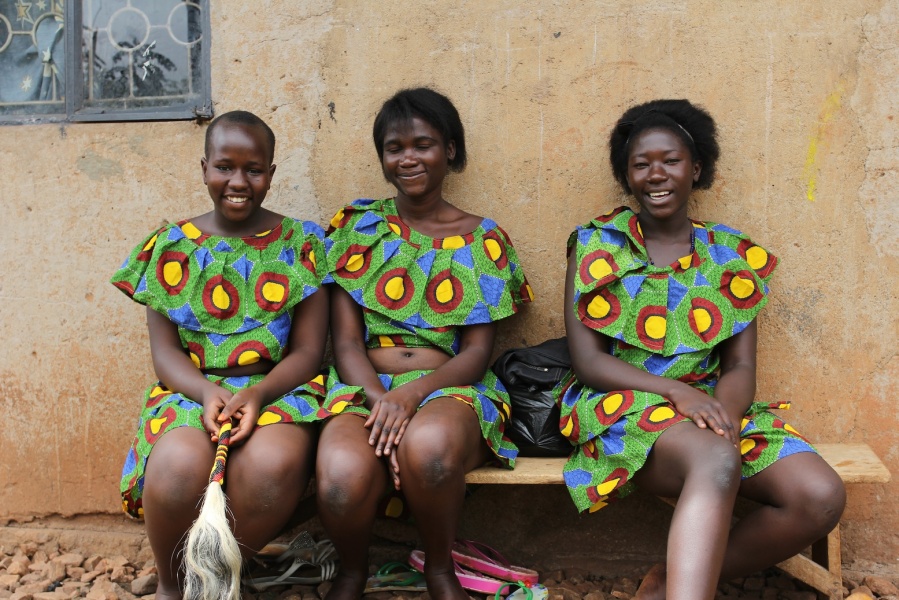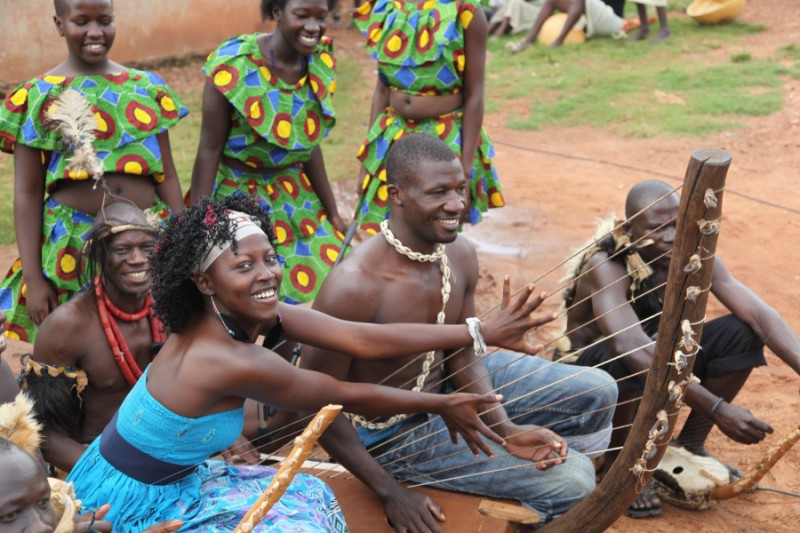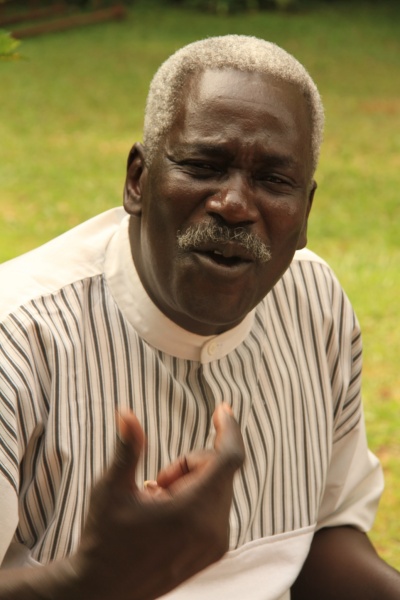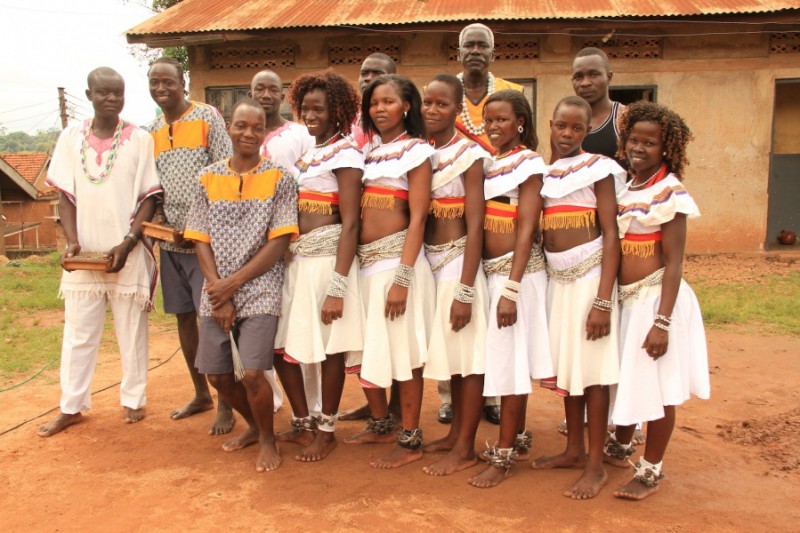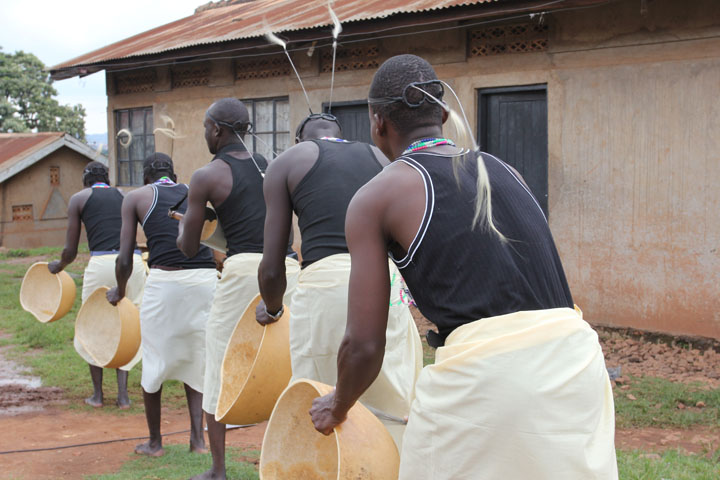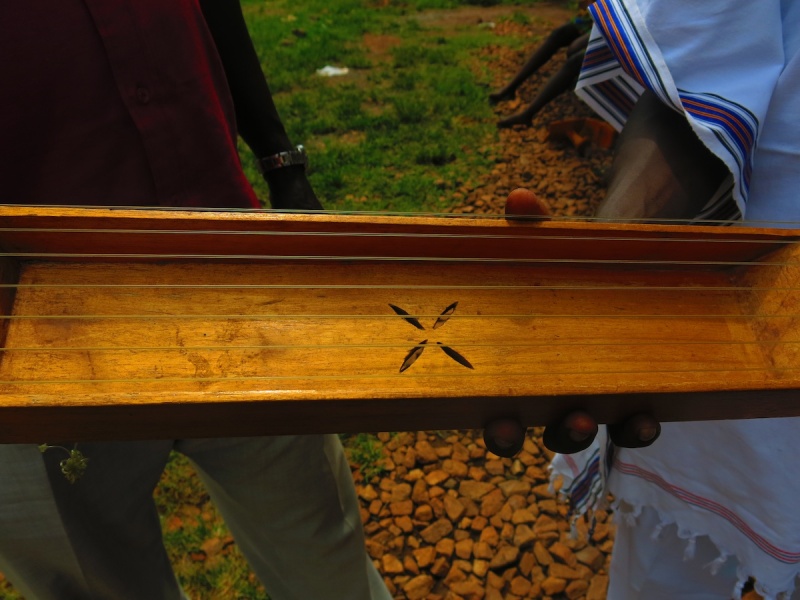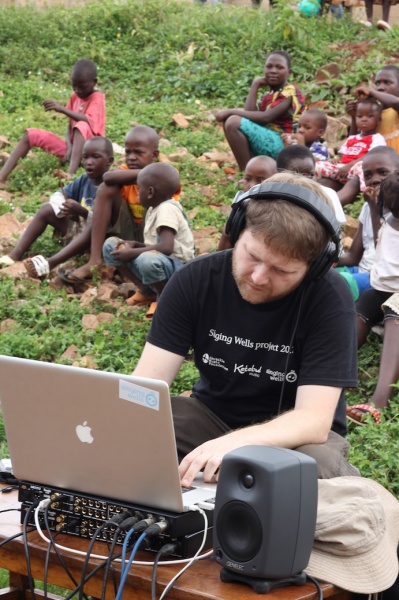We have decided there is a spirit of the night road. If you pay enough homage to it, you will be rewarded. After the massive contributions to the spirit last night we were given two great troupes in Naguru.
Naguru is a suburb of Kampala and we forced our two big vans through the crowded urban streets to a little square where we set up for recording.
Exactly 24 hours ago we set up to record in Northern Uganda in the village of Obuell-Lira. This was the most idyllic rural scene we’ve experience – with picture perfect huts settled behind flower beds and sleeping cattle. This morning we encounter a perfect urban setting, with the square carved into a hill, with rows and rows of streets below us, and an equal number of streets and houses piled up above us. There were cars, motorbikes and taxi’s driving past and planes flying overhead. Everything was for sale by everyone who walked by. No sleeping cattle. No flower beds.
But, as always, there was wonderful music. The first group was the Adungu Cultural Troupe, masters of the Adungu. We had interviewed their leader on our ‘recce’ trip earlier.
Here’s the band:
We’ve had the odd adungu here and there in the north, but never the full ensemble. There’s the big bass adungu and then 3-4 others in progressively smaller sizes. The three general sizes are called ‘bass’, ‘solo’ and ‘bass 2’.
As with the Likembe, the bass adungu doubles as the kick drum and this case the drummer was also the vocalist. The band was rounded out with shakers and 3 young women dancers (below).
They played four songs. The first was called ‘Adii Mudong‘, which was a traditional piece of music sung in the Alur language. The music is typical to the type of songs you’d hear at a wedding, and the lyrics talk about the happiness that still exists in the villages of Northern Uganda, despite the destruction caused by the war. The name translates to ‘how much is left’ referring to how the war hasn’t taken everything in the North, they still have happiness.
The next song was called ‘Yom Chunya‘ is of a similar style, and it means ‘my heart is happy’.
They then sang a song in part English and part Swahili, called ‘Pearl of Africa‘. This was actually written by Jimmy Adokwun around five years ago, but it uses traditional styles to convey their message of national pride. Here is the video of Pearl of Africa:
The last song, which was wholly authentic, was called ‘Africa Na Jembe‘ which talks about the Ugandan’s emphasis on being deserving. The song says that first you must dig in the field before you can eat. The lyric in swahili in the chorus: “tula kula kua jembe” means ” through our work in the field we can eat”. It is based on the traditional ideology that hard work should always come first.
After hearing this set we asked them to do a Magic Moment and then join Akello for Influences to sing ‘Awinyo’, which sounded magical.
Our second group was Watmon Cultural Troupe, which was a large dance act of men and women with heavy percussion.
Matthew Watmon (above) is the leader of his group, which he started in 1991. The members are from all over Uganda, but generally perform music in the style of Acholi, as Watmon is originally from Kitikum, not far from Gulu up in Northern Uganda, and moved down to Kampala during the war.
We love the instrument they played, the Nanga (below) so much we asked if they would join us in Entebbe to record more songs with Akello. We asked them to come with us to our next stop: our hotel in Entebbe, purely because we were desperate to have more time with the stunning musicians we met in the city. During the two hour drive to Entebbe we talked with Watmon and his son, Odika Constantine about their family’s interesting past.
To be continued……


